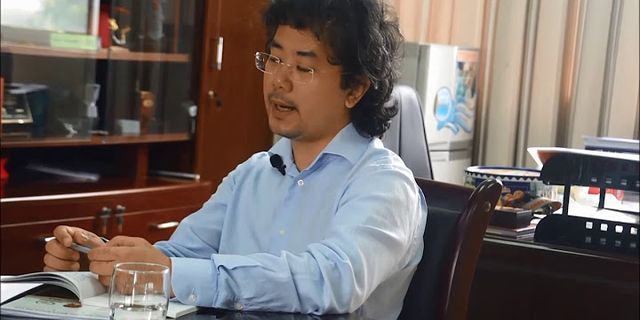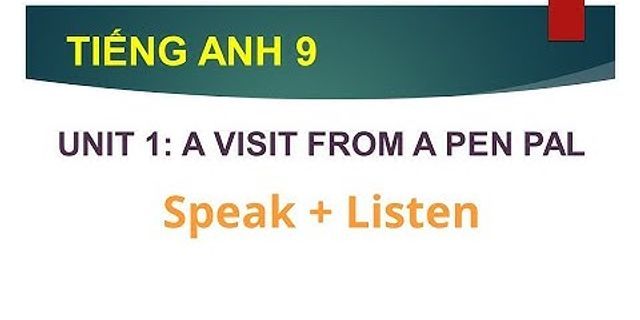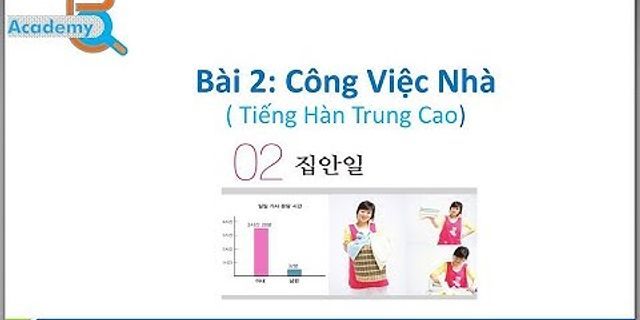Show
Listen or download the section 1-4 sound files and answer the below questions while you listen. Write your answer on a separate piece of paper and number from 1-40. Listening Assessment Section 1 IELTS Listening Assessment SECTION 1 Questions 1 – 10 Complete the form below Write ONE WORD AND/OR A NUMBER for each answer.
Listening Assessment Section 2
SECTION 2 Questions 11 – 20 Write the correct letter, A – H, next to Questions 11 – 1511. Supermarket _______________ 12. Climbing supplies store _______________ 13. Museum _______________ 14. Bike hire _______________ 15. Cafe _______________ Questions 16 – 20 What comment does the speaker make about each of the following tracks? Write the correct letter, A, B, or C, next to Questions 16 – 20.   Track 16. North Point 17. Silver River 18. Valley Crossing 19. Stonebridge 20. Henderson Ridge Listening Assessment Section 3
SECTION 3 Questions 21 – 30 Choose the correct letter A, B or C. 21. Why has James chosen to do a case study on the company Furniture Rossi?
22. According to James, why did Luca Rossi start a furniture company?
23. What gave Furniture Rossi a competitive advantage over other furniture companies?
24. What does the tutor recommended James does when writing the second draft of his case study?
25. What do the tutor and James agree was wrong with James ‘last presentation’?
Questions 26 – 30 Complete the flow chart below Choose FIVE answers from the list below and write the correct letter, A – G, next to Questions 26 – 30.   Listening Assessment Section 4 SECTION 4 Question 31 – 40
Questions 31-36. Complete the notes below. Write ONE WORD ONLY for each answer. Write ONE WORD ONLY for each answer. Questions 37 – 40 Answer the questions below. Write ONE WORD ONLY for each answer. What TWO images drawn by Aboriginal people show their contact with Europeans?
Which human activities does the lecturer say are the main threats to Aboriginal rock art?
CHECK YOUR ANSWERS HERE.
IELTS Reading Assessment READING PASSAGE 1 Questions 1 – 14 Read the following below and answer Questions 1 – 7. ONLINE TUTORS ONLINE Tutors are excellent EFL/ESL teachers from around the world! They can be your private English tutor right on your computer! To send an email, message to an ONLINE tutor, just click on the name and write a short message to introduce yourself! A Astrid Manyana (f 46) Chile Special offer for Spanish speakers: bilingual teaching of English grammar and explanations in Spanish. 25 years’ experience teaching all levels from age 15 to 55. Basics, oral, written, specific interests (e.g. tourism) and preparation form Cambridge and IE0S exams. I can make speaking English easy for you! B John Benneth-Smith (M 27) Canada I have been teaching English conversation as a volunteer in a language centre in my city for about one year. I have also been using e-mail. ICQ and NetMeeting to teach grammar, composition and conversation over the internet to about 20 or so students for about the same length of time. I am willing to teach (free of charge), privately or to groups, and to teach those language skills which are of interest to a particular student. C. Pamela Arrowsmith (F 56) Australia I have taught English for over 30 years, and have developed a range of classroom materials. I offer tutoring assistance in all areas of English, with an emphasis on Business Writing for EFL adults. I can arrange trips to Australia for business and professional adults, either individuals or groups [maximum of four adults] and these can include English classes. If desired.
I really like to create new kinds of teaching materials and I usually create my own activities instead of using the same Kind of exercises and texts we all are used to. Let’s try that in our classes – it will be fun! I have a BA and a Certificate in Teaching English as a Second Language and I have been teaching all levels of ESL student for more than 3 years. I offer a complimentary assessment of your skill level. E. Naoe Nagayo (F 36) Japan I have taught English as a Foreign Language for 6 years. I have a TEFL certificate from the USA and an MA in Applied Linguistics from the University of Birmingham, UK. My students range from preschoolers to adults. With my experience and knowledge, I can help you to target your learning difficulties and improve your English ability! Questions 1-5 Look at the description of Online Tutors (A-E). Write the appropriate letter A-E in boxes 1-5 on your answer sheet. Which tutor would you choose…? Example: …… if your first language was Spanish? Answer: A 1 …… to teach young children? 2 …… to improve English for your business? 3 …… if you didn’t have much money? 4 …… if you were bored with the usual language learning exercises? 5 …… to do exam preparation Questions 6 and 7 Choose two appropriate letters, A-E, for answers 6 and 7. Which TWO descriptions mention – 6 …… language teaching qualifications? 7 …… more than 10 years’ teaching experience? Read the information about recycling and answer Questions 8-14. NO-WASTE RECYCLING GUIDENo-Waste is a goal and a process that involves individuals, communities, businesses and all levels of government. It leads to a future where trash is a thing of the past. Solid waste isn’t hidden or buried in landfills but fully utilised as the valuable resource that it is. Through redesign, reduction, reuse, repair, recycling, composting and changes in attitude, we aim to create opportunity and wealth instead of garbage. RECYCLING – Inside your blue boxEvery second week: Put garbage and recyclables out before 8 AM on collection day. Household Plastic containers Includes milk jugs, yoghurt containers, detergent bottles. Excludes containers made of foam, plastic containers which held ammonia-based products, or metal bottle lids. Rinse to remove food or residue. Leave labels on, flatten or stack plastic containers to reduce space required.Glass containers Leave labels on. Rinse. Discard caps.No other types of glass such as kitchenware, drinking glasses, window glass, light bulbs, mirrors or any broken glass.Metals Food and beverage containers.Cans – rinse and remove labels, flatten and fold together.Foil trays – rinse, flatten and fold together.No metal pots, take out container lids, cigarette wrappings.Beside your blue box YELLOW BAG Household paper – junk mail, envelopes, brochures, paper bags, egg cartons (fibre only); box packaging such as cereal, shoe boxes, paper towel cores, white and coloured office paper, telephone books.Remove liners, flatten packaging and place inside the bag.Mo drinking boxes, paper towels or waxed paper.BLUE BAG Newspapers, inserts, sales flyers, magazines and catalogues. Remove magazine covers, perfumed inserts. Ho books or soiled newspapers.TEXTILES, CLOTHING AND LINENS Race clean textiles in a separate plastic shopping bag tied with string.CARDBOARD Packing boxes, liquor boxes.Flatten bundles and tie – no larger than 30 x 30 x 8. Place beside the blue box. No waxed or coated boxes, soiled pizza boxes. Questions 8-10Choose ONE item only from the list below to go in each recycling container. 8 in the Blue Box ………………. 9 in the Yellow Bag ………………. 10 in the Blue Bag ………………. LIST OF ITEMS FOR RECYCLINGtelephone bookold clothingwed pizza delivery boxceramic cupheavy cardboardpacking boxmagazinesold textbookaluminium drink light bulb Questions 11-14Look at the following statements. In boxes 11-14 on your answer sheet write – YES if the answer is “yes’ NO if the answer is ‘no’ NOT GIVEN if there is no information about this in the passage 11 Do I put out items for recycling every other week? 12 Should I remove labels from food cans? 13 Can I recycle a broken window? 14 Is there a separate collection for large household items? READING PASSAGE 2 Read the text below and answer Question 15-18. A CAREER IN HOTEL MANAGEMENTIntroduction
The International College of Hospitality Management provides diploma and degree level hotel management training for the international hospitality and tourism industry. Established in 1993, the International College of Hospitality Management is the Asia-Pacific Basin campus cf the renowned European Hotel Association. It also incorporates the classical French cooking training of Le Gourmet, Paris.
The International College of Hospitality Management course is industry-oriented, balancing operative, supervisory and management level training. The Diploma course is 3 years full time. Semesters 1, 3 and 5 are spent studying on campus, and Semesters 2, 4 and 6 are spent in the industry on undergraduate placements, called ‘stages’. One stage may be taken up with language studies. Bachelor of Business (Hotel Management) Degree Students who graduate with the International Hotel Management Diploma are assured of a further year of Degree Study at the University of the Antipodes. Studies will focus on such areas as: Global Marketing, Strategic Management, Total Quality Management, Cross-Cultural Communications, Developing Organisations and Management of Change, Global Development in Hospitality and Tourism, Intercultural Relations. Under certain circumstances the final year of study can be conducted on a part-time basis and by distance education mode, enabling students to study while maintaining a full-time career in the hospitality industry, either here or in their home country. Questions 15-18Choose ONE phrase from the list below (A-J) to complete each of the following sentences. NB There are more phrases than required, so you will not use all of them. 15 The hospitality industry… 16 The College… 17 The Diploma course… 18 The Degree course… LIST OF PHRASES A …includes work experience placements overseas. B …can be done by distance mode. C …requires foreign language studies. D …has links with overseas institutions. E …must be completed in Australia. F …combines study with industry placements. G …offers expanding opportunities for employment. H …must be completed in one year. I …takes 3 years to complete, part-time. J …consists of several campuses. Read the text below and answer Questions 19-23. Training FacilitiesThe International College of Hospitality Management has more than 120 professional lecturers and international-standard, training facilities. These include three public restaurants, ten commercial training kitchens, simulated front office training facilities, four computer suites, a fully operational winery, and a food science laboratory. The Learning Resource Centre collection is extensive. The student support services provide professional counselling in the areas of health, learning support, language skills, accommodation and welfare. Childcare facilities are also available on campus. International HomeThe International College of Hospitality Management has students enrolled from more than 20 countries, some of whom stay on campus in International House. Built in 1999, International House is accommodation comprising villa-style units. Each student has their own bedroom, sharing en suite facilities with another student. An adjoining kitchenette and lounge area is shared by the four students in the villa. All meals are served in the College dining room which is next to the student common room. Student privacy and security are priorities. A computer outlet in each bedroom enables a student to connect to the College network, providing 24 hour-a-day access. The residence is a two-minute walk to the College’s sporting and training facilities and is on a regular bus service to the city centre 10 km away. International House is also being used to enhance on-campus training, from Monday to Friday, Year 1 students, supervised by 2nd Years, are assigned kitchen, waiting, housekeeping and receptionist duties. Simulated check-in/check-out exercises, receptionist duties and breakfast service to a limited number of rooms are also part of the program. Questions 19-23Look at the following statements. In boxes 19-23 on your answer sheet, write – YES if the statement is correct according to the passage NO if the statement is incorrect according to the passage NOT GIVEN if the information is not given in the passage 19 The training facility has 10 kitchens. 20 All students in the program live at International House. 21 Four students share a unit in the residence. 22 The residence is used as part of the training program. 23 All meals in the residence are prepared by the students. Read the text below and answer Questions 24-27. INTERNATIONAL HOTEL MANAGEMENT DIPLOMAShort CoursesA.
C.This certificate is designed for participants wishing to acquire the skills relevant to table attendant duties within an a la carte restaurant. The course includes: table setting for a variety of menus, plate and silver service, tray and wine service, ordering and docket systems, wine styles and label identification, food and wine combinations. D. This certificate is designed for participants wishing to acquire the skills to perform a bar attendant’s duties within range of industry settings. Course includes: bar preparation, cash handling, beer service, patron care, basic cocktail mixing, product knowledge. Questions 24-27Four short courses (A-D) from the ‘International Hotel Management Diploma’ are outlined in the text above. Choose the correct title (i-viii) for each course from the list below. NB There are more titles than descriptions so you will not use all of them. List of Course Titlesi. Food and Wine Serviceii. Housekeeping Proceduresiii. Cocktails and Mixed Drinksiv. Hotel Front Office Managementv. Bars and Service of Drinksvi. Resort Operation and Managementvii. Catering Control viii. Hotel Front Office Reception 24. Course A READING PASSAGE 3 Read the text below and answer Question 28-40. CALISTHENICSThe world’s oldest form of resistance training A. From the very first caveman to scale a tree or hang from a cliff face, to the mighty armies of the Greco-Roman empires and the gymnasiums of modern American high schools, calisthenics has endured and thrived because of its simplicity and utility. Unlike strength training which involves weights, machines or resistance bands, calisthenics uses only the body’s own weight for physical development. B. Calisthenics enters the historical record at around 480 B.C., with Herodotus’ account of the Battle of Thermopolylae. Herodotus reported that, prior to the battle, the god-king Xerxes sent a scout party to spy on his Spartan enemies. The scouts informed Xerxes that the Spartans, under the leadership of King Leonidas, were practising some kind of bizarre, synchronised movements akin to a tribal dance. Xerxes was greatly amused. His own army was comprised of over 120,000 men, while the Spartans had just 300. Leonidas was informed that he must retreat or face annihilation. The Spartans did not retreat, however, and in the ensuing battle, they managed to hold Xerxes’ enormous army at bay for some time until reinforcements arrived. It turns out their tribal dance was not a superstitious ritual but a form of calisthenics by which they were building awe-inspiring physical strength and endurance.
D. Calisthenics experienced its second golden age in the 1800s. This century saw the birth of gymnastics, an organised sport that uses a range of bars, rings, vaulting horses and balancing beams to display physical prowess. This period is also when the phenomena of strongmen developed. These were people of astounding physical strength and development who forged nomadic careers by demonstrating outlandish feats of strength to stunned populations. Most of these men trained using hand balancing and horizontal bars, as modern weight machines had not yet been invented.
H. In recent years, however, fitness trends have been shifting back toward the use of calisthenics. Bodybuilding approaches that promote excessive muscle development frequently lead to joint pain, injuries, unbalanced physiques and weak cardiovascular health. As a result, many of the newest and most popular gyms and programmes emphasize calisthenics-based methods instead. Modern practices often combine elements from a number of related traditions such as yoga, Pilates, kettle-ball training, gymnastics and traditional Greco-Roman calisthenics. Many people are keen to recover the original Greek vision of physical beauty and strength and harmony of the mind-body connection. Questions 28Which of the following statement is true according to the passage? Write A, B, C or D in the box 28 on your answer sheet. 28 Calisthenics is – A. the world’s oldest form of sports training B. a strength training C. a battle techniqueD. being emphasized by many popular gyms Questions 29-35The text has eight paragraphs, A–H. Which paragraph contains the following information? Write the correct letter, A–H, in boxes, 29–35 on your answer sheet. 29. The origin of the word ‘calisthenics’. 30. The last popular supporter of calisthenics. 31. The first use of calisthenics as a training method. 32. A multidisciplinary approach to all-round health and strength.
Questions 36-40Complete the summary below.Choose NO MORE THAN TWO WORDS from the text for each answer.Write your answers in boxes 36–40 on your answer sheet.
CHECK YOUR ANSWERS HERE. |




















